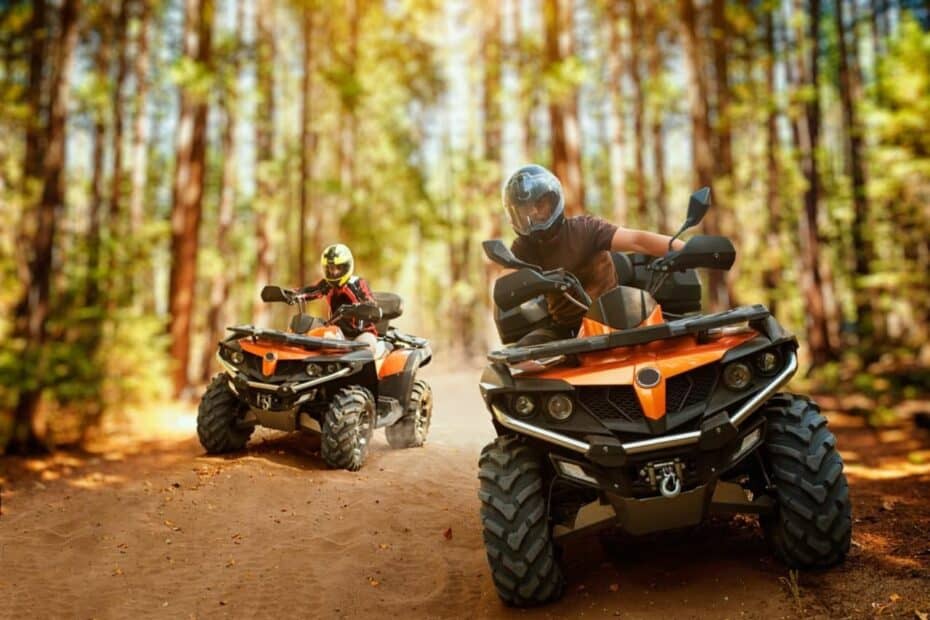All-terrain vehicles (ATVs) have seen a notable increase in popularity, particularly during the pandemic years when outdoor activities became a refuge for many seeking both recreation and professional utility. However, with this rise in usage, there has also been a significant spike in injuries and fatalities associated with these vehicles. This article delves into the latest statistics, explores the causes of ATV accidents, and provides safety insights for 2024.
The Rise in ATV Popularity and Associated Risks
The pandemic era brought about an unprecedented surge in the use of off-highway vehicles (OHVs), including ATVs, dirt bikes, utility terrain vehicles (UTVs), side-by-side vehicles, and snowmobiles. According to the U.S. Consumer Product Safety Commission (CPSC), ATVs alone were responsible for 96% of all OHV-related injuries from 2016 to 2020. This alarming statistic underscores the importance of understanding and mitigating the risks associated with ATV use.
Annual Injury and Fatality Statistics
On average, OHVs cause over 700 deaths and 100,000 emergency room visits in the U.S. each year. From 2016 to 2018, a staggering 2,211 people died from OHV accidents. In 2020 alone, OHV-related incidents resulted in 112,300 injuries, a testament to the growing concern around these vehicles.
The impact of these deaths is concentrated in specific states, with 10 states accounting for 42% of all OHV-related deaths from 2016 to 2018. The states with the highest fatalities include:
- Texas: 139
- West Virginia: 114
- Pennsylvania: 112
- Kentucky: 104
- California: 101
Causes of ATV Accidents
The most common cause of ATV accidents is inexperience. New ATV riders are thirteen times more likely than experienced riders to crash during their first month of use. Other significant factors include:
- Incorrect operation: Driving on paved surfaces or carrying more passengers than seats allow.
- Dangerous stunts: Attempting risky maneuvers without proper skills or supervision.
- Unfamiliar terrain: Navigating areas without prior knowledge or preparation.
- Ignoring laws: Disregarding state or local regulations.
- Lack of supervision: Young riders under 18 often crash due to the absence of adult oversight.
Accident Demographics
From 2016 to 2018, people aged 55 and older accounted for the largest proportion of OHV-related deaths, followed by the 25 to 34 age group. However, younger age groups, particularly those aged 16 to 24 and 25 to 34, were more likely to suffer injuries.
OHV-Related Injuries by Age (2016-2020)
- Under 12: 13%
- 12 to 15: 13%
- 16 to 24: 23%
- 25 to 34: 20%
- 35 to 44: 13%
- 45 to 54: 9%
- 55+: 8%
ATVs and Children
The use of ATVs by children remains a contentious issue. From 2016 to 2018, almost 300 children under 16 died in OHV accidents, with 142 of these children under 12 years old. Injuries among children under 12 totaled 69,300 from 2016 to 2020. Organizations like the American Academy of Pediatrics (AAP) strongly advise against children under 16 operating or riding in ATVs, citing developmental incapability to handle these machines safely.
Types of Injuries
In 2020, the most common injuries from OHV accidents involved the head, neck, and arms, each accounting for 30% of emergency room visits. Other injuries included:
- Leg injuries: 20%
- Torso injuries: 20%
Most injuries were not life-threatening, with 78% of victims treated and released and 19% hospitalized. The most frequent diagnoses were fractures and contusions or abrasions (bruises or scrapes). A significant majority of the injured were male (68%).
Safety Recommendations for ATV Use
Given the high risks associated with ATVs, it is crucial to follow safety guidelines to mitigate accidents. Here are some recommendations:
- Take a Safety Course: Enroll in an ATV safety course to learn proper handling and operating techniques.
- Wear Protective Gear: Always wear a helmet, gloves, goggles, long sleeves, and pants.
- Supervise Young Riders: Ensure that riders under 18 are supervised by an adult.
- Follow the Rules: Adhere to state and local laws regarding ATV use.
- Avoid Paved Roads: ATVs are designed for off-road use and should not be driven on paved surfaces.
- Limit Passengers: Do not carry more passengers than the vehicle is designed for.
- Stay Sober: Never operate an ATV under the influence of alcohol or drugs.
What to Do if Hurt at Home Depot
Accidents can happen anywhere, including large retail stores like Home Depot. If you are injured at Home Depot, it is crucial to take the following steps:
- Seek Immediate Medical Attention: Your health is the priority. Ensure that you get the necessary medical care.
- Report the Incident: Inform the store management about the accident and ensure they document it.
- Gather Evidence: Take photos of the accident scene, your injuries, and any hazardous conditions that contributed to the accident.
- Collect Witness Information: If there are any witnesses, get their contact details.
- Consult a Personal Injury Lawyer: Hiring a personal injury lawyer can help you navigate the complexities of filing a claim. For more information, you can consult an ATV accident attorney.
Hiring a Personal Injury Lawyer
A personal injury lawyer can be instrumental in securing the compensation you deserve. They can help you:
- Understand Your Rights: Personal injury laws vary by state, and a lawyer can help you understand your legal rights.
- Gather Evidence: A lawyer can assist in collecting and preserving evidence to strengthen your case.
- Negotiate with Insurance Companies: Insurance companies often aim to minimize payouts, but a lawyer can negotiate on your behalf to ensure fair compensation.
- File a Lawsuit: If necessary, a lawyer can file a lawsuit and represent you in court.
For a state-by-state guide to personal injury suit limitations, refer to this resource.
Calculating Property Damage Compensation
In addition to personal injuries, accidents can result in property damage. Calculating fair compensation for property damage involves assessing the extent of the damage, repair costs, and any loss of use. For more information on how to calculate property damage compensation, visit this guide.
Conclusion
The surge in ATV use has brought about a corresponding increase in accidents and injuries. Understanding the risks and following safety guidelines can help mitigate these dangers. If you are injured, whether in an ATV accident or at a place like Home Depot, it is essential to take the right steps and consult a personal injury lawyer to protect your rights and secure fair compensation.
By staying informed and vigilant, we can enjoy the thrills of ATVs while minimizing the associated risks.






